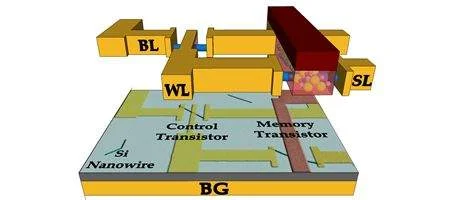Researchers are developing a new type of computer memory that could be faster than existing commercial memory and use far less power than flash memory devices.

The technology combines silicon nanowires with a ferroelectric polymer that switches polarity when electric fields are applied. The changing polarity is read as 0 or 1, allowing information to be stored in binary code.
The new technology is called FeTRAM, for ferroelectric transistor random access memory. It’s similar to ferroelectric random access memories, FeRAMs, which are in commercial use. However, because it stores information using a ferroelectric transistor instead of a capacitor, it allows for nondestructive readout, meaning information can be read without losing it.
The FeTRAM technology has nonvolatile storage, meaning it stays in memory after the computer is turned off, and has the potential to use 99 percent less energy than flash memory, says Purdue University doctoral student Saptarshi Das.
“However, our present device consumes more power because it is still not properly scaled,” he says. “For future generations of FeTRAM technologies one of the main objectives will be to reduce the power dissipation. They might also be much faster than another form of computer memory called SRAM.”
The new technology also is compatible with industry manufacturing processes for complementary metal oxide semiconductors, (CMOS), used to produce computer chips. It has the potential to replace conventional memory systems, says Das.
The team’s filed a patent application for the concept.






